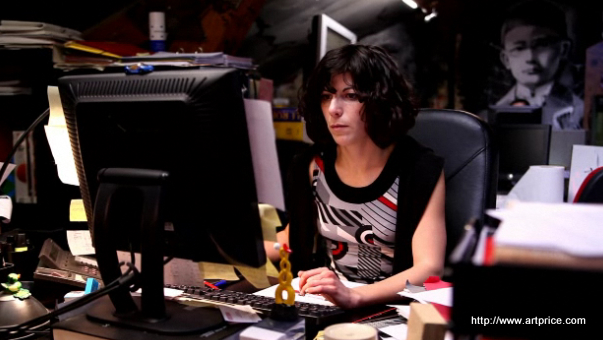If you’ve been in the tech or startup world for any longer than a few years, you’ve probably come across Marc Andreessen’s 2011 Wall Street Journal essay, “Why Software is Eating the World.” It’s a brilliant piece and few would argue that Andreessen’s core theory hasn’t proven true. Software has taken over — and will continue to take over — virtually all significant aspect of our lives.
Along those lines, there’s a related (and equally disruptive) shift that’s happening: old, human-powered sales processes are being devoured by automated, machine-powered marketing and sales automation platforms. Or, to put this trend in Andreessen parlance, marketing is eating sales.
Consider these numbers:
- By 2020, Gartner predicts customers will self-manage 85 percent of their relationships with companies without ever directly engaging a human.
- More than 50 percent of respondents to an Economist survey said marketing will own the customer buying experience in the next three to five years.
- As of March 2016, there were nearly 4,000 marketing technology service vendors.
And that’s just the beginning.
I’ve been a student of marketing since I was a teenage intern at an advertising agency. Over the next 20 years, I continued finding delight in both the creative and analytical aspects of marketing. I eventually became a startup CMO, helping achieve a $150 million exit. When I decided to start my own company, it was to build the next generation of marketing analytics software.
As adoption of technology and automation continues to expand, marketing will become an even more dominant part of the buyer journey. As buyers grow accustomed to getting personalized information on demand without the help of a human sales representative, they’ll demand more of those types of hyper-relevant automated experiences, and much less human interaction.
Three Key Drivers of Marketing’s Rise
Today, the marketing and sales funnel continues to change rapidly. There are more channels than ever before and more interactions within each channel. As a result, marketers must assume responsibility for a greater portion of the sales process. But it does come with a new challenge: with the explosion of marketing channels and data, the complexity of marketing has increased geometrically.
In this new world, there are three key drivers that will continue to influence marketing’s rise up the food chain:
- The evolution of the internet and mobile. By 2020, the number of internet users is expected to exceed 4 billion. With the explosion of mobile, people are always This changes how sales and marketing operate in very fundamental ways. We as marketers can take advantage of mobile by offering more personalized experiences to know more about someone, such as their location and past behavior.
- A more complex buyer’s journey. The modern buyer’s journey traverses a complex path through multiple channels en route to a sale. Whether it’s email or the good old-fashioned telephone call, there are countless ways to connect with customers (and them to us). Marketing is now a bidirectional, social operation. We can deliver personalized and contextually relevant campaigns. This presents an opportunity for marketers to encourage audience participation. You can join existing conversations on Twitter, for example, or promote your own hashtag.
- The adaptation of human behavior. Human behavior is changing as well. In the younger generation of consumers, word of mouth, authentic user reviews and social media play an increasingly important part in driving sales. Ninety-one percent of millennialssay they’d consider buying a product if a friend recommended it. This presents a great opportunity for marketers to increase brand awareness through word-of-mouth referrals. Even “boring” products have passionate advocates. Once you find them, start nurturing them. It can be as simple as a “thank you.” Later, you can ask for their help in spreading the word about your shared interests by authoring a blog post or review, for example.
How These Trends Impact the Future of Marketing
Each of these trends increases the burden on marketing agencies, and requires more involvement from various disciplines under the modern marketing umbrella. Ultimately, more automation and connectedness means that consumers win. The more marketers deliver intelligent, authentic, personalized experiences that address consumers’ unique interests, the easier it will be to make the best decisions about products and solutions.
For example, in my own prospect outreach, I’ve found that if I send a personalized and automated message as the CEO, it’s much more effective than a salesperson sending a generic one. That’s fairly intuitive. But what’s not obvious is that it can scale well enough to make it worthwhile. Consider my results. I limited personalized outreach to only executives at my top 100 prospective accounts. I then personally wrote a single core outreach message, with the introductory line personalized for each person. Using an automation tool, I also wrote one soft reminder email and one thank-you email. The responses came directly to me. By pairing my authentic voice with data and automation, I achieved a 91 percent open rate, a 65 percent response rate and over 10 percent success rate.
In many companies, marketing’s impact on revenue generation is finally being acknowledged — a once unimaginable goal for marketers who were saddled with the “cost center” label. I can’t wait for a day when all marketers see their hard work tied to revenue.
BusinessCollective, launched in partnership with Citi, is a virtual mentorship program powered by North America’s most ambitious young thought leaders, entrepreneurs, executives and small business owners.
Image Credit: CC by Thierry Ehrmann




